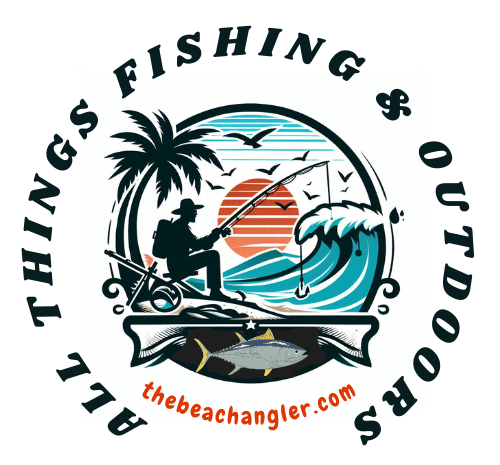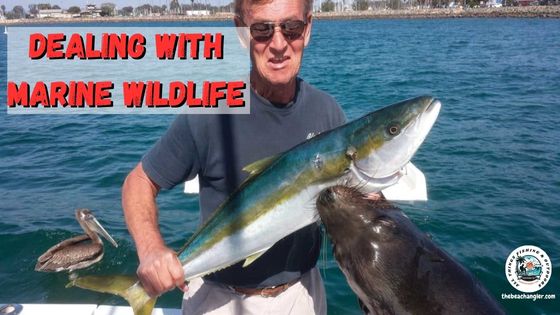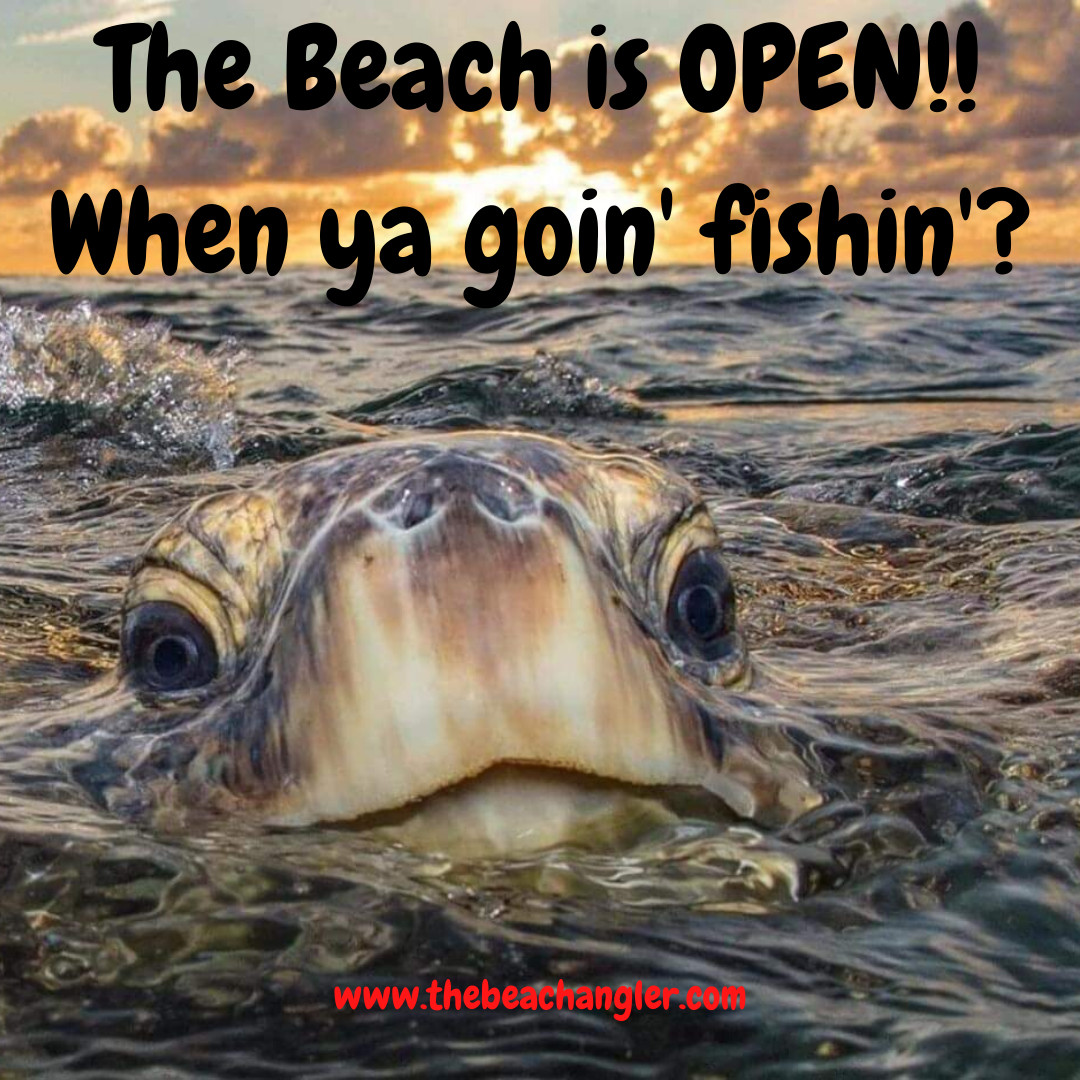I spend many a day fishing in the bays, on the beaches, and offshore waters. The thrill, excitement, and anticipation of saltwater fishing are hard to match, but there are a variety of marine wildlife species that we need to be aware of on our angling adventures.
Some can be dangerous and some we can pose a danger to. Follow along with me and we’ll look at some practical safety tips for dealing with the fish and wildlife we may encounter while saltwater fishing.
QUICK LOOK: Tips for Dealing with Marine Wildlife
- Do Your Research – Know what marine wildlife you may encounter, and its behaviors, in your chosen fishing areas.
- Keep Your Distance – Marine animals can be very territorial and become aggressive during times of feeding, breeding, or protecting their home territory.
- Don’t Feed the Animals – Avoid feeding marine wildlife. It attracts them and increases the chances of an unfortunate injury to you or them.
- Stay Calm – If you should happen to encounter marine wildlife, stay calm, don’t make any sudden moves, and back away slowly.
- Relocate if Necessary – It may be necessary to move to another fishing area if you find yourself in a concentration of marine wildlife like feeding sharks or a jellyfish bloom.
- Understand Basic First Aid – If the unfortunate should happen and you are injured from a marine wildlife encounter. Knowing some basic first aid skills can prevent a more serious situation.
In the vast expanse of the ocean, anglers can cross paths with everything from noisy seagulls, and gentle manatees to inquisitive seals and dangerous sharks. Each creature plays a role in the marine ecosystem. Recognizing our impact, and knowing what wildlife we may encounter and their behaviors is the first step in ensuring the safety of both them and us.
My focus in this article is to share what I’ve learned and to give some safety tips for dealing with marine wildlife you may bump into while saltwater fishing. Of course, the first order of business is to know before you go.
Before heading out for a fishing trip, it’s essential to have a basic understanding of the marine fish and wildlife inhabiting the area. Different species exhibit various behaviors, and knowing their patterns can help prevent accidents or conflicts.
Preparation before Fishing
Researching your fishing location is fundamental. A good starting point would be to contact your local Game and Fish Department. Handling fish and wildlife requires care and caution to prevent injury to both yourself and the animals.
Additionally, being aware of potentially dangerous marine wildlife, such as jellyfish, sharks, or stingrays can help avoid risks and painful injury.
Understanding Marine Wildlife and Their Behaviors
As someone who, over the years, has had my share of marine wildlife encounters, I’ve learned to respect the diversity, complexity, and behaviors of marine life and the potential dangers they can pose.
Start with the fundamentals. Familiarize yourself with local wildlife regulations and guidelines regarding the protection of marine birds and other wildlife species. Many areas have specific rules in place to protect these animals, including restrictions on approaching or harassing them. Adhering to regulations helps conserve sensitive habitats and ensures the long-term health of marine wildlife populations.
Most of your marine wildlife encounters will be harmless and without incident. Problem encounters occur when marine wildlife are either feeding, breeding, or when you encroach on their territory.
When fish and wildlife are in a feeding frenzy it is best to stay clear. Don’t wade into a school of baitfish when feeding fish are present. Many “shark attacks” are simply a case of mistaken identity where feeding sharks bite someone while chasing baitfish.
Also, during the breeding season, males can become particularly aggressive and protective. Avoiding wildlife during the breeding season will not only protect you but will help ensure the successful perpetuation of the species.
Another important consideration is the territorial nature of many marine wildlife species. Some will aggressively protect their feeding areas and home range. Wildlife like brown bears in Alaska can become dangerous when feeding on the annual salmon runs, or when you get too close to a sow with cubs.
Types of Marine Wildlife and Important Safety Tips
Marine Birds
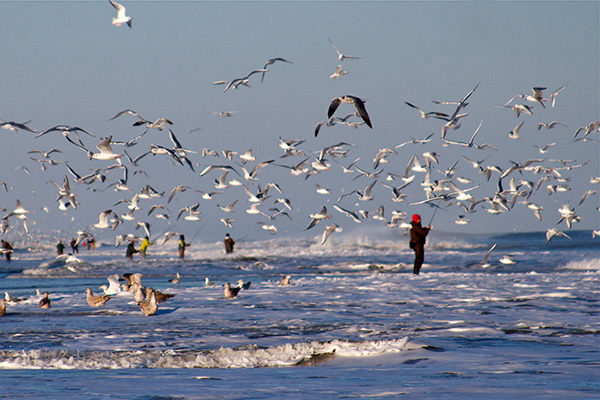
As saltwater anglers, we will encounter many marine bird species. Everything from seagulls, pelicans, herons, terns and more. They can be a great help for finding fish when you find them diving on bait. But they can also be a nuisance if they get tangled in your lines or hooked trying to steal your bait.
Nesting birds can become quite aggressive when defending their nesting areas and in many jurisdictions it is illegal to disturb nesting sea birds so be aware. When dealing with marine birds be mindful of the following safety tips to ensure the well-being of both yourself and the birds:
- Avoid Feeding the Birds: While it may be tempting to share scraps or bait with marine birds, feeding them can disrupt their natural foraging behaviors and may lead to dependency on human food sources. Plus you run the risk of them getting fouled in your lines and pooping on you and your gear.
- Secure Bait and Food: Keep bait and food securely stored in sealed containers or coolers to prevent attracting unwanted attention from birds. Seagulls, in particular, are notorious for swooping down to snatch unattended food, which can lead to confrontations and potential injuries.
- Minimize Littering: Dispose of trash and leftover bait properly to prevent attracting birds to fishing areas. Littering not only harms the marine environment but also encourages scavenging behavior in birds, increasing the likelihood of conflicts with anglers.
- Watch for Nesting Sites: Be aware of nesting sites for birds such as terns, seagulls, and herons, which are often found in coastal areas or along shorelines. Disturbing nesting sites can disrupt breeding behaviors and may be illegal in some areas.
- Be Mindful of Hooks and Lines: Keep fishing lines and hooks properly secured to prevent accidental entanglement or injury to birds. Dispose of broken lines and discarded hooks responsibly to minimize the risk to birds and other wildlife.
Dealing with Marine Mammals
Encountering marine mammals such as dolphins, seals, sea lions, and depending on your location, even bears while fishing can be a fascinating experience, but anglers need to prioritize safety for both themselves and the animals. Here are some safety tips for anglers who may encounter marine mammals:
- Maintain a Safe Distance: When observing marine mammals, maintain a safe distance to avoid disturbing their natural behavior or causing them stress. Keep a distance of at least 50 yards (150 feet) from dolphins and 100 yards (300 feet) from seals, sea lions, and bears as recommended by marine mammal protection guidelines.
- Avoid Feeding or Disturbing: Refrain from feeding or attempting to interact with marine mammals. Avoid making loud noises or sudden movements that could startle or disturb the animals.
- Be Cautious with Fishing Gear: Exercise caution when using fishing gear to avoid accidentally entangling or hooking marine mammals. Keep fishing lines and hooks properly secured and pay attention to the movements of nearby animals to prevent accidental encounters.
- Watch for Signs of Aggression: While marine mammals are generally curious and harmless, it’s essential to be aware of signs of aggression or agitation. If a marine mammal displays aggressive behavior, such as barking, growling, or lunging, slowly and calmly move away from the area to avoid confrontation.
- Stay Calm and Respectful: In the presence of marine mammals, remain calm and respectful of their territory, allowing them to go about their natural behaviors without interference. Enjoy the opportunity to observe these magnificent creatures from a safe distance.

Tips for Dealing with Sharks
When saltwater fishing there is the possibility that you may be sharing your fishing spot with sharks. Sharks have been known to grab the fish on the stringers of unsuspecting wade fisherman and, in some cases, grab your fish while you are trying to land it. Prioritize safety by following these essential tips in areas where sharks are present:
- Know Before You Go: Before heading out, research the area to understand the likelihood of encountering sharks. Be aware of local shark species, their behavior patterns, and any recent shark sightings or activity reported in the area.
- Avoid High-Risk Areas: If possible, avoid fishing in areas known for frequent shark activity, such as seal colonies, drop-offs, or areas with large baitfish concentrations. Choosing fishing spots away from these high-risk areas reduces the likelihood of shark encounters.
- Fish during Daylight Hours: Sharks are typically more active during dawn and dusk when visibility is lower. Fishing during daylight hours when visibility is better reduces the likelihood of unexpected encounters with sharks.
- Minimize Blood and Scent: Avoid excessive bleeding when handling bait or catch, as blood and scent can attract sharks from a distance. Promptly release any bleeding fish to minimize attracting sharks to your fishing area.
- Be Mindful of Fish Behavior: Keep an eye on the behavior of fish in the area. Sudden changes in fish behavior, such as erratic swimming or mass fleeing, may indicate the presence of sharks or other predators nearby. If you are wade fishing and observe such behavior, consider relocating to a different fishing spot.
- Handle Catch Safely: When handling caught fish, avoid dangling them over the side of the boat (See Below). Use a fish gripper tool and land your fish quickly and efficiently to minimize the risk of attracting the unwanted attention of sharks.
- Stay Alert: Maintain situational awareness at all times while fishing, keeping an eye on your surroundings, and scanning the water for any signs of shark activity. If you spot a shark nearby, calmly and slowly move away from the area to avoid confrontation.

Stingrays the Marine Wildlife Version of a Landmine
One of my least favorite species of marine wildlife is the stingray. I have had the unpleasant experience of stepping on a stingray while wade fishing and had it hit with its barb right between my ankle bone and Achilles tendon. That was the most intense pain I have ever felt. So, when fishing in areas where stingrays are present, I strongly suggest you take the following precautions to avoid accidental encounters and minimize the risk of stingray injuries.
- Shuffle Your Feet: When wading in shallow waters, shuffle your feet along the seabed instead of taking large steps. This movement helps to alert stingrays of your presence and encourages them to move away, reducing the risk of accidentally stepping on one.
- Watch Where You Step: Be vigilant and watch where you step, especially in sandy or muddy areas where stingrays may be partially buried. Avoid disturbing the seafloor unnecessarily and be mindful of any underwater obstacles or irregularities. I was stepping over a cluster of oysters on the bottom. The stingray was waiting for me on the other side.
- Be Aware of Surroundings: Pay attention to your surroundings and watch for signs of stingray activity, such as visible sand clouds indicating a stingray has just swam off. Stay alert and avoid fishing in areas where stingrays are known to frequent, especially during peak breeding season.
- Wear Protective Footwear: Consider wearing protective footwear such as water shoes, reef boots, or ray guards with thick soles to provide an additional layer of protection against stingray stings.
- Know First Aid Procedures: Familiarize yourself with first aid procedures for treating stingray stings in case of an accidental encounter. If stung, rinse the affected area with hot water (not scalding) to help alleviate pain and neutralize the venom. Seek medical attention promptly if the sting is severe or if allergic reactions occur.

Jellyfish, and other Marine Wildlife
One of the most common types of marine wildlife you are likely to encounter while saltwater fishing is one or more jellyfish species. Here are some essential safety tips for fishing in areas where jellyfish and Portuguese Man o’ War are present:
- Protective Clothing: Wear protective clothing such as long-sleeved shirts, long pants, and water shoes to minimize skin exposure to jellyfish tentacles. This reduces the risk of painful stings and skin irritation.
- Avoid Touching: Do not touch jellyfish or Portuguese Man o’ War, even if they appear stranded on the shore or floating in the water. Their tentacles can still deliver painful stings even if they appear inactive or washed up.
- Stay Alert: Keep a lookout for jellyfish and Man o’ War while fishing, especially in areas where they are known to be present. Look for reports of recent sightings in the area to stay informed. A sudden change in tide or currents can bring jellyfish with it.
- Use Protective Gloves: When handling fishing lines or nets that may come into contact with jellyfish or Man o’ War tentacles, wear protective gloves to prevent stings. Avoid using bare hands to handle fishing equipment in areas where these creatures are present.
- Apply Vinegar: If stung by a jellyfish, immediately rinse the affected area with vinegar to help neutralize the venom and alleviate pain. Seek medical attention if the sting is severe or if allergic reactions occur.
- Know First Aid: Carry a first aid kit with supplies such as vinegar, antihistamines, and pain relievers for immediate treatment if needed.
Now, depending on where you are in the world, there are other marine wildlife species that you may come across while saltwater fishing. Various species of sea turtles, crabs, and potentially dangerous fish such as barracuda and alligator gar among others.
Understanding signs of distress or aggression can prevent dangerous encounters. And, always give marine wildlife plenty of space. If an animal approaches you, remain still and quiet to avoid escalating the situation.
As soon as it is safe to do so, back away from the animal and find a different area to fish. When you’re sharing the seas with wildlife, a bit of knowledge about animal behaviors goes a long way toward ensuring a safe outing for everyone involved.

Emergency Protocols When Wildlife Interactions Go Bad
Even with a strong understanding of marine life behavior and diligent safety practices, unexpected encounters can happen. Knowing how to respond in these situations can make all the difference in your safety and the well-being of the marine animals.
For starters, if you’re injured by marine wildlife, assess the severity of the situation calmly. For minor injuries, such as small cuts or jellyfish stings, clean the area with seawater and apply antibiotic ointment. If you experience a serious injury, such as a venomous sting or a large wound, seek medical attention IMMEDIATELY. Always keep a first-aid kit on board for such emergencies.
In the event of an encounter with a potentially dangerous animal like a shark, remain as still as possible and slowly back away without making sudden movements. If you’re in a group, stay together; sharks are less likely to approach a group.
If you do catch a shark unintentionally, cut the line as close to the hook as safely possible, which is often the best practice for both your safety and the shark’s well-being. The hook will rust out in the marine environment and the shark will heal.
Frequently Asked Questions about Marine Wildlife and Fishing Safety

What should I do if I encounter a shark while fishing?
Remain calm and avoid making sudden movements. Slowly reel in your line to avoid attracting attention, and if the shark approaches, slowly back away while maintaining eye contact. In the unlikely event of an attack, defend yourself using any available means, such as hitting the shark’s sensitive areas.
What should you do if you hook a shark?
It happens, but don’t panic. If it’s legal and you intend to keep it, follow local regulations for size and species. If you’re releasing it, cut the line as close to the hook as possible. For larger sharks or those that are protected, it’s best to not bring them onto the boat and release them while they’re still in the water.
Is it safe to touch coral while fishing?
It’s best to avoid it. Corals are delicate organisms that can be damaged or even killed by direct contact. Additionally, touching corals can expose you to sharp edges and harmful organisms. If your gear becomes entangled, gently disentangle it without touching the coral.
What should I do if I accidentally hook a marine animal while fishing?
If you accidentally hook a marine animal, such as a seabird or sea turtle, carefully remove the hook and release the animal as quickly and gently as possible. If the animal is injured, contact local wildlife authorities for assistance.
How can I minimize the risk of encountering dangerous marine wildlife while fishing?
To minimize encounters with dangerous marine wildlife, avoid fishing in areas known for high concentrations of predators, such as shark-infested waters. Stay informed about local wildlife and follow any guidelines or regulations provided by authorities.
How can I protect myself from jellyfish stings while fishing?
To protect yourself from jellyfish stings, wear protective clothing such as wetsuits or rash guards. If you spot jellyfish in the water, avoid swimming or wading in that area. If stung, rinse the affected area with vinegar or seawater and seek medical attention if symptoms are severe.
What should I do if I encounter a stranded or injured marine animal while fishing?
If you encounter a stranded or injured marine animal while fishing, keep a safe distance and contact local wildlife authorities or animal rescue organizations for assistance. Do not attempt to handle or rescue the animal yourself, as it may be injured or distressed.
Final Thoughts on Saltwater Angling and Marine Wildlife
Responsible angling goes hand in hand with conservation. This understanding ensures that future generations can also enjoy the thrill and serenity of fishing in the ocean.
Practicing safety measures and being prepared for unexpected encounters with marine wildlife are not just recommendations, they could prevent injuries to both you and the wildlife that would potentially ruin an otherwise pleasant fishing trip.
Remember, the sea is a vast and dynamic environment home to countless species. Taking the time to learn about the behaviors and habitats of marine wildlife enriches the fishing experience and will allow you to recognize the signs of a dangerous encounter.
Whether you’re a seasoned angler or someone casting the line for the first time, the call to action remains the same: PROTECT our marine life PRESERVE the pristine beauty of our oceans, and always practice safety first for both you and our marine wildlife populations.
As always, stay safe, enjoy the journey and please try to leave it cleaner than you found it. If you have any comments, questions, ideas, or suggestions please leave them in the comment section below and I’ll get back to you ASAP. You can follow us on Facebook: Rex The Beach Angler, Instagram: thebeachangler7, Twitter: @AnglerBeach, and YouTube: Man Art Creations.
P.S. – Thanks so much for checking out our blog we really appreciate it. Just so you know, we may receive a commission if you click on some of the links that appear on our site. This helps us keep our content free and up-to-date for everyone. We appreciate your support!
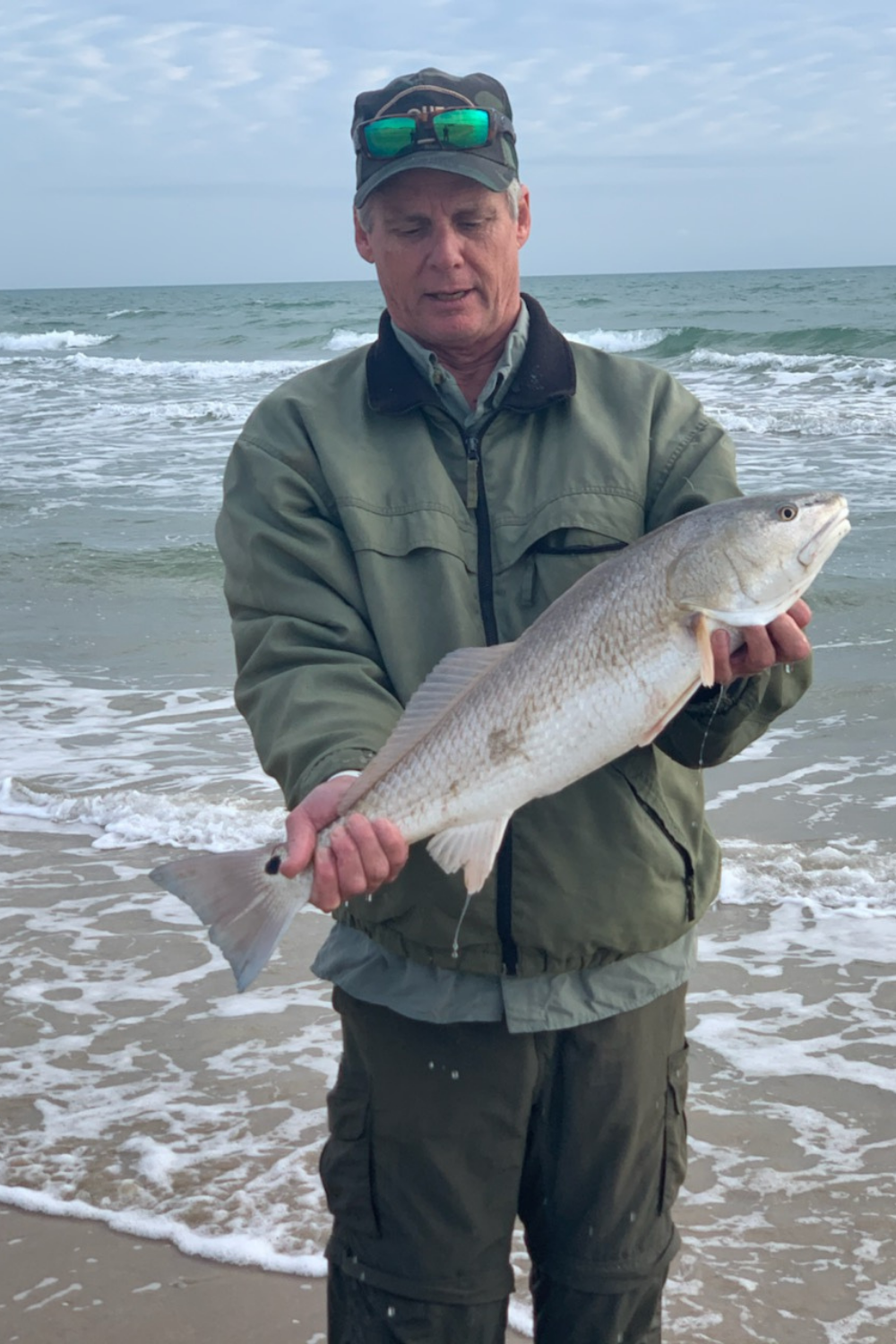
A life long surf fisherman with 50+ years of experience, I am also an avid hunter and outdoorsman. I will be sharing my passion for the outdoors with you so be prepared for hunting, fishing, camping, hiking and more. Along with gear reviews and the latest trends and innovations in the outdoor industry.
